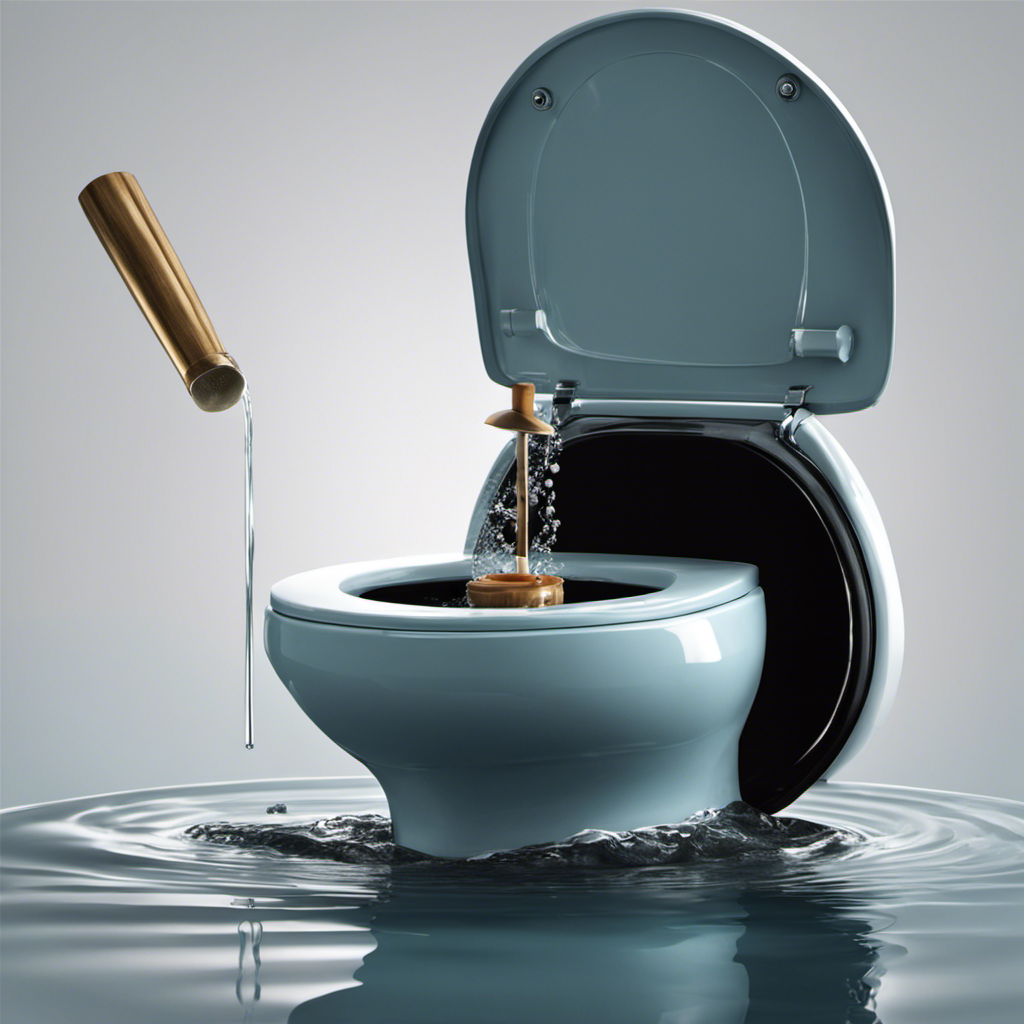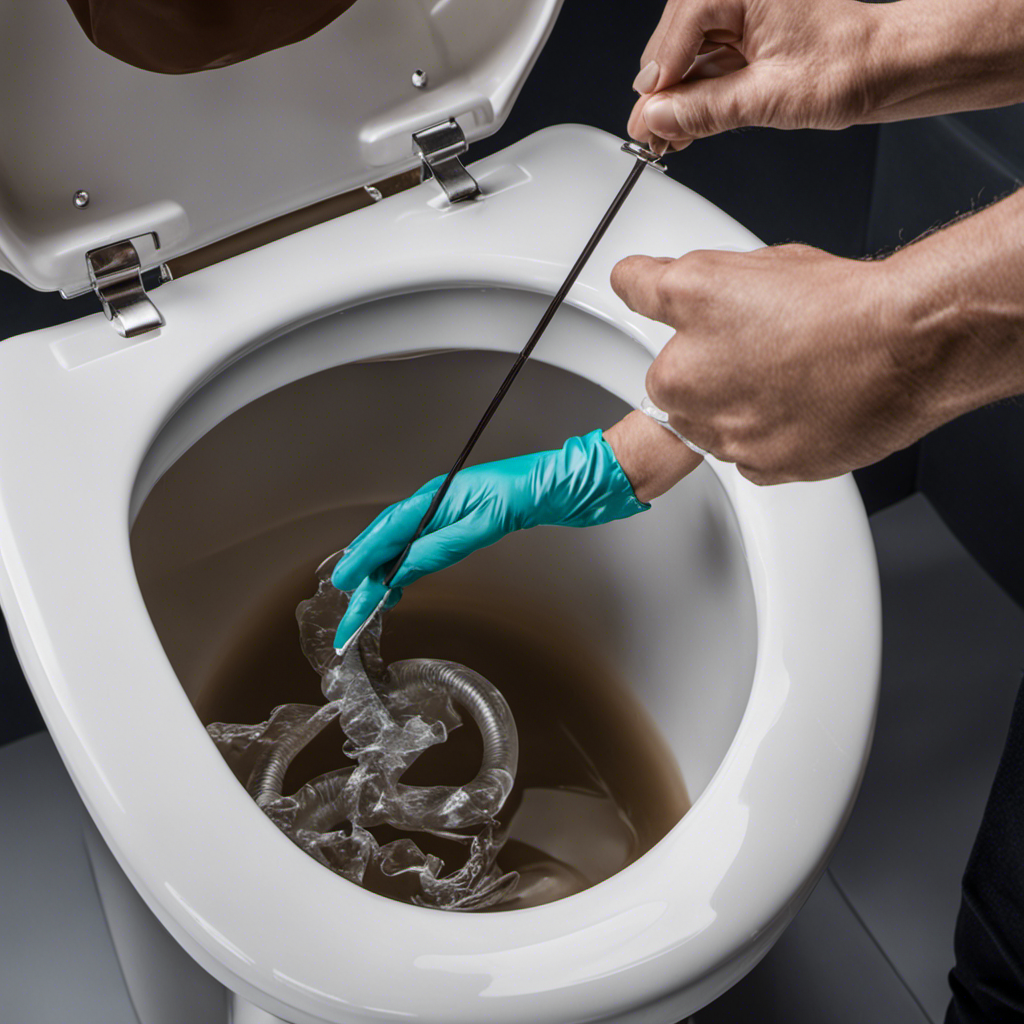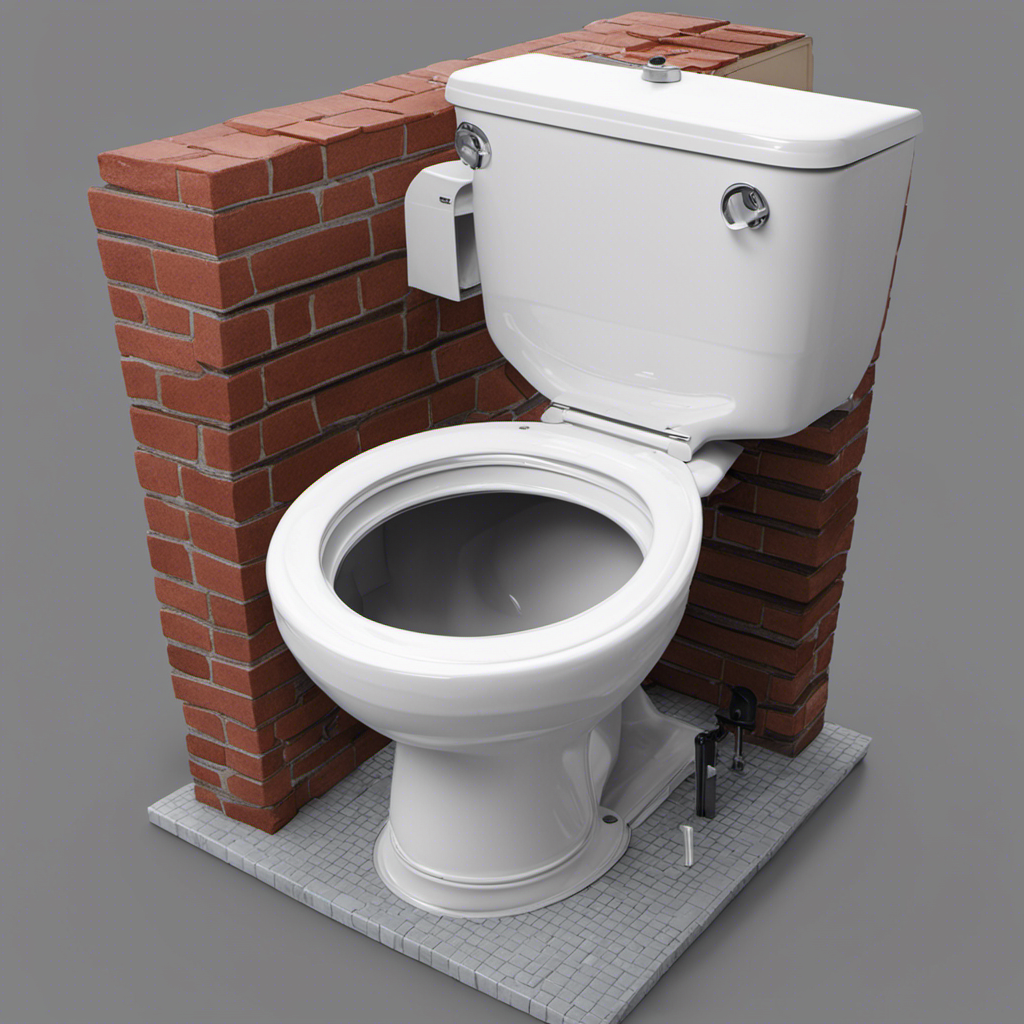When faced with a clogged toilet, the urgency to empty the bowl becomes paramount. In this article, I will guide you through the precise steps to safely and efficiently empty a toilet bowl.
By assessing the water level, gathering the necessary tools, shutting off the water supply, and draining the bowl, you can quickly restore functionality to your bathroom.
With attention to detail and proper cleaning techniques, you’ll soon have a fresh and sanitized toilet bowl ready to use again.
Let’s dive in!
Key Takeaways
- Check the water level in the toilet bowl to ensure it is not too high or low
- Shut off the water supply before draining and cleaning the toilet bowl
- Use a plunger and suitable cleaner to unclog and clean the toilet bowl
- Regularly inspect and maintain the water valve and supply line to prevent issues
Assess the Water Level
First, check if the water level in the toilet bowl is too high. Assessing the water level is crucial in troubleshooting low water level issues.
Start by lifting the toilet tank lid and observing the water level inside. Ideally, the water level should be about an inch below the top of the overflow tube. If the water level is too high, it could indicate a problem with the fill valve or the float mechanism.
On the other hand, if the water level is too low, it may be caused by a faulty flapper or a clogged inlet valve.
Assessing the water level is the first step in diagnosing and resolving any water damage issues or low water problems in the toilet bowl.
Gather the Necessary Tools
To get started, you’ll need a few tools. Here’s a list of what you’ll need:
-
Plunger:
A plunger is an essential tool for unclogging a toilet bowl. It creates suction that helps dislodge any blockages. -
Rubber gloves:
It’s important to protect your hands from any potential bacteria or germs that may be present in the toilet bowl.
Proper toilet bowl maintenance is crucial in preventing clogs. Regularly cleaning the bowl and ensuring that only appropriate items are flushed can help avoid clogging issues.
However, if you find yourself dealing with a clogged toilet bowl, these tools will come in handy. Remember to use the plunger with forceful but controlled movements to create the necessary pressure. And don’t forget to wear the rubber gloves for hygienic reasons.
With the right tools and proper maintenance, you can keep your toilet bowl in excellent working condition.
Shut Off the Water Supply
Before you start, make sure to shut off the water supply to prevent any potential mess. This step is crucial in preventing water damage and ensuring a smooth process. To troubleshoot the water supply, locate the shut-off valve near the base of the toilet. Turn the valve clockwise until it is fully closed. This will stop the flow of water into the toilet bowl. To visually guide you, refer to the table below for a clear understanding of the shut-off valve’s position.
| Location | Position |
|---|---|
| Shut-off Valve | Clockwise (Off) |
Drain the Toilet Bowl
Now, you’ll need to remove the water from the toilet bowl to prepare for the next step. To drain the toilet bowl, follow these steps:
-
Get a bucket or a large container to collect the water. Make sure it is clean and can hold a significant amount of water. Place it near the toilet bowl for easy access.
-
Use a plunger to push the water down the drain. Position the plunger over the drain hole. Push down firmly and then pull up quickly. Repeat this plunging motion several times until the water starts to drain.
By draining the toilet bowl, you are taking an important step in toilet bowl maintenance and unclogging toilets. Removing the water allows you to access the clog more easily and effectively.
Remember to wear gloves and use caution when handling the water to maintain proper hygiene.
Clean and Disinfect the Empty Toilet Bowl
After draining the toilet bowl, it’s important to clean and disinfect it to maintain proper hygiene. Cleaning techniques for an empty toilet bowl involve using a toilet brush and a suitable cleaner.
Firstly, I recommend wearing gloves to protect your hands from any bacteria or germs. Take the toilet brush and dip it into a cleaning solution or a mixture of water and bleach. Scrub the inside of the bowl, paying special attention to the rim, under the rim, and the sides. Make sure to reach all the nooks and crannies.
After scrubbing, flush the toilet to rinse away the cleaner.
Next, choose a disinfectant option such as a disinfecting wipe or a spray. Apply the disinfectant to the entire bowl surface and let it sit for the recommended time.
Restore the Water Supply
To restore the water supply, the first step is to reconnect the water pipe. This can be done by securely attaching the pipe to the water source using the appropriate connectors.
Next, it is essential to check the water valve to ensure it is fully open, allowing water to flow freely.
Reconnecting Water Pipe
Make sure you’ve securely reconnected the water pipe before proceeding. To ensure a proper reconnection, follow these steps:
-
First, inspect the water pipe for any signs of damage or leaks. If there are any issues, fix them before proceeding.
-
Next, carefully align the water pipe with the corresponding connection on the toilet bowl. Ensure that it fits snugly and securely.
-
If the pipe has a seal, make sure it’s in good condition. If not, replacing the seal is necessary to prevent future leaks.
-
Tighten the connection by hand, making sure not to overtighten and risk damaging the pipe or toilet bowl.
-
Once the water pipe is securely reconnected, turn on the water supply and check for any leaks around the connection.
-
If there are no leaks, you can proceed to the next step in emptying the toilet bowl.
Checking Water Valve
You’ll want to check the water valve to ensure it is functioning properly.
To begin, locate the water valve, usually found near the base of the toilet. Turn it clockwise to shut off the water supply.
Next, remove the tank lid and inspect the valve for any visible signs of damage or leaks. If there are no obvious issues, turn the water valve counterclockwise to restore the water supply.
Check the water pressure by flushing the toilet and observing the flow of water. If the water pressure seems low, you may need to adjust the valve or clean any mineral build-up.
Troubleshooting the water valve is an essential step in maintaining proper water flow and preventing leaks in your toilet system.
Restoring Water Flow
Once the water valve is turned counterclockwise, restoring the water supply, ensure proper water flow by flushing the toilet and observing the flow of water. This step is crucial to restoring water pressure and troubleshooting common issues. Here are some key points to keep in mind:
-
Check for clogs: If the water flow is weak or nonexistent, it could be due to a clog in the toilet or the plumbing system. Use a plunger or a plumbing snake to clear any blockages.
-
Inspect the water supply line: Sometimes, the issue lies in the water supply line itself. Check for any leaks, kinks, or obstructions that might be affecting the water flow.
-
If there’s a leak, tighten the connections or replace the faulty parts.
-
If there’s a kink or obstruction, straighten the line or remove the obstruction.
Frequently Asked Questions
Can I Use Any Cleaning Products to Clean and Disinfect the Empty Toilet Bowl?
Yes, you can use specific cleaning products to clean and disinfect the empty toilet bowl. It is important to use products that are specifically designed for toilet bowl disinfection to ensure effective and thorough cleaning.
How Often Should I Clean and Disinfect the Empty Toilet Bowl?
I clean and disinfect my empty toilet bowl once a week to prevent stains. It’s important to maintain a regular cleaning schedule to ensure hygiene and keep the bowl looking its best.
Is It Necessary to Shut off the Water Supply Before Draining the Toilet Bowl?
No, it is not necessary to shut off the water supply before draining the toilet bowl. However, it is recommended to turn off the water supply during toilet bowl maintenance to prevent any water leakage or accidents.
What Should I Do if the Water Level in the Toilet Bowl Is Too High?
If the water level in the toilet bowl is too high, I should first turn off the water supply to prevent overflow. Then, I can use a plunger or a toilet auger to unclog the toilet and empty the bowl.
Can I Use a Plunger to Drain the Toilet Bowl?
Yes, using a plunger is an effective way to drain the toilet bowl. However, if that doesn’t work, using a snake to unclog the toilet or considering alternatives to the plunger can be helpful.
Conclusion
In conclusion, emptying a toilet bowl may seem daunting, but it can be done efficiently with the right steps and tools.
First, assess the water level in the toilet bowl. If it is too high, you may need to remove some water before proceeding.
Next, shut off the water supply to the toilet. This can usually be done by turning off the valve located behind the toilet or by turning off the main water supply to your home.
Once the water supply is shut off, it’s time to drain the toilet bowl. Use a plunger or a toilet auger to remove any clogs or blockages that may be causing the toilet to not drain properly.
After successfully draining the toilet bowl, remember to clean and disinfect it before restoring the water supply. Use a toilet bowl cleaner and a brush to thoroughly clean the bowl, and then flush the toilet to rinse away any remaining residue.
In conclusion, emptying a toilet bowl can be done efficiently by assessing the water level, shutting off the water supply, draining the toilet bowl, and cleaning and disinfecting it. By following these steps, you can keep your toilet bowl clean and fresh.










